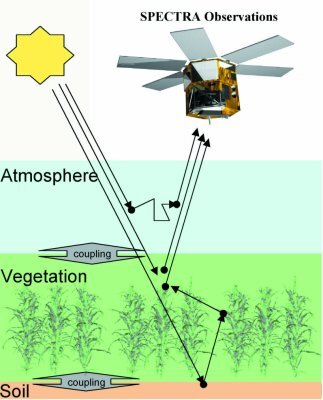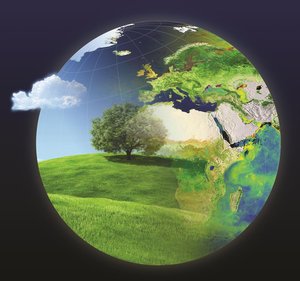The 2nd SPECTRA Workshop - another step closer to advancing our understanding of the carbon cycle
Last week more than 100 scientists gathered at ESA’s Space Research and Technology Centre (ESTEC) in The Netherlands, with the common interest of furthering our knowledge on how vegetation functions within the terrestrial carbon cycle. The purpose was to participate in a workshop dedicated to an Earth Explorer Candidate Core Mission called SPECTRA (Surface Processes and Ecosystem Changes Through Response Analysis).
The 2nd SPECTRA Workshop, which was held on 28-30 October, not only featured over 35 stimulating presentations and 25 posters, but also provided the forum for a wide range of interesting discussions covering all aspects of the SPECTRA mission concept. The mission, which has just finished undergoing feasibility study, aims to address areas of uncertainty in the terrestrial carbon cycle balance by describing, understanding and modelling the role that terrestrial vegetation plays in the carbon cycle and how it responds to climate change.

The work presented at the event demonstrated that the preparation of the SPECTRA mission concept has focussed a wide community on the scientific exploitation of the data that can be achieved from this mission.
Dr. Michael Rast, Head of Land/Surfaces Unit at ESTEC commented that, “This workshop proved to be a great success bringing together scientists from as far away as Australia to focus on the scientific issues and developments of the SPECTRA mission. The event has really consolidated the underlying science objectives of SPECTRA and provided the opportunity to review the technical status of the mission. We are now at a very exciting stage in the development of the mission concept as we look forward to undergoing the Earth Explorer selection process next spring. If selected for further development, the SPECTRA mission will offer a better understanding of the role that vegetation plays in the carbon cycle, and this is vital for improving capabilities to analyse processes related to climate change and to further our understanding of the impact that increasing human activity is having on terrestrial ecosystems”.
The mission is conceived as a single satellite that will carry a space-borne imaging spectrometer. This instrument will be able to view targets on the Earth from different angles in order to analyse directional reflectance and emission of thermal radiance by soil and vegetation. SPECTRA will focus on systematically obtaining data over an ensemble of regions that are representative of all the major terrestrial biomes, such as boreal forest, deciduous woodland, tropical forest and savannah. The data acquired by SPECTRA will help derive measurements of important plant properties, such as chlorophyll and water content, temperature and leaf area. This information can then be used in larger scale models for accurate assessment of the current and future role that terrestrial vegetation plays in the global carbon cycle.
There are several scientific support studies addressing modelling and scaling issues still running, but with the main feasibility studies completed and the success of the workshop, SPECTRA offers a strong scientific case for contributing to solving one of the major issues surrounding climate change.





